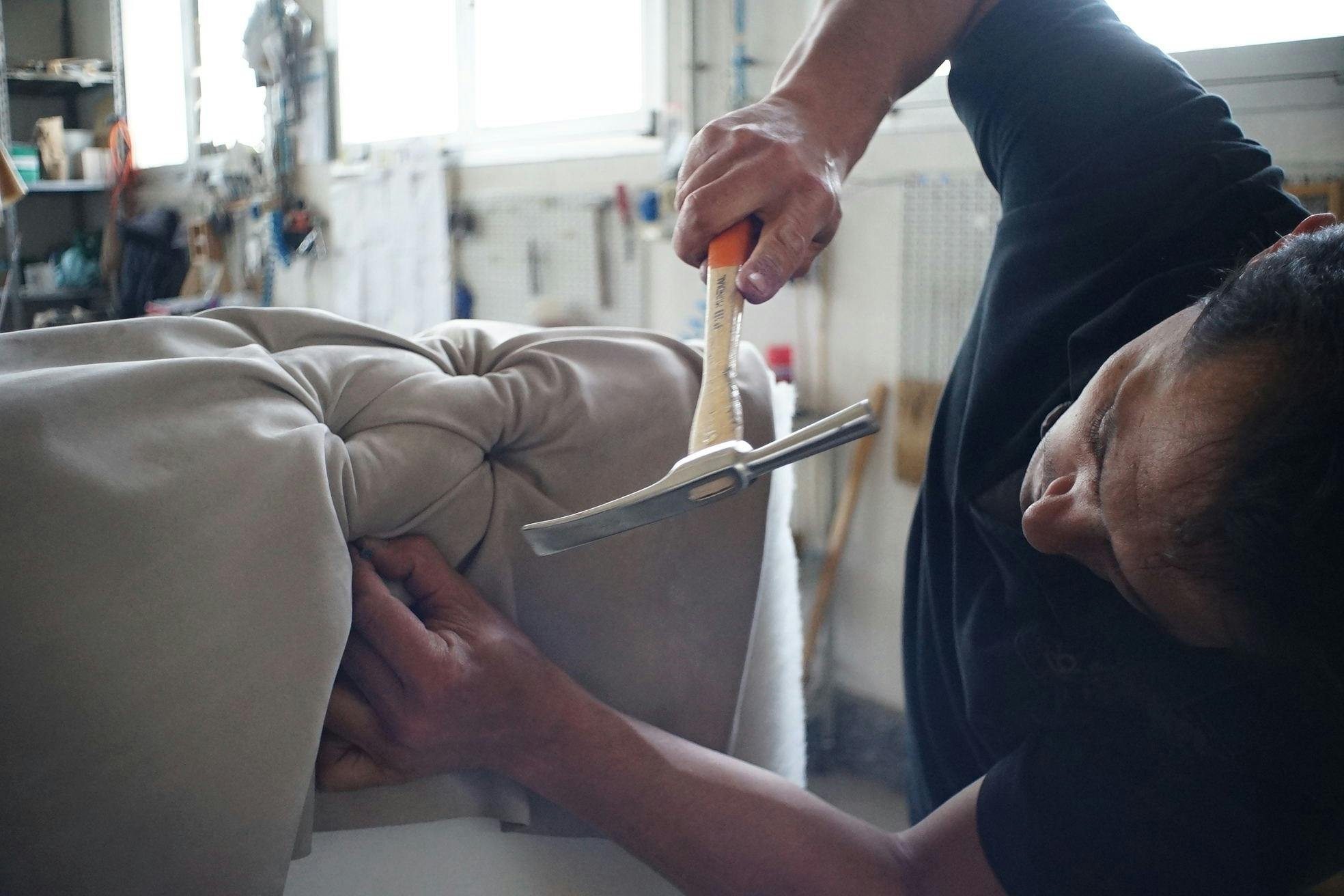Sustainable Upholstery: How to Make Eco-Friendly Choices in Furniture Restoration
In today’s world, sustainability is no longer just a buzzword—it’s a way of life. Upholstery, as a craft and industry, has embraced eco-friendly practices, offering homeowners and businesses the chance to reduce waste, save money, and create beautiful, durable furniture. This guide explores how sustainable upholstery can transform your living spaces while protecting the planet.
What Is Sustainable Upholstery?
Sustainable upholstery combines traditional reupholstery techniques with environmentally conscious materials and methods. Instead of discarding old furniture, sustainable upholstery focuses on repair, reuse, and revitalization. It’s about crafting something that looks good, feels good, and does good.
Key principles of sustainable upholstery include:
- Upcycling: Breathing new life into discarded or outdated furniture.
- Using Eco-Friendly Materials: Opting for organic, recycled, or biodegradable fabrics and fillings.
- Reducing Waste: Repurposing existing materials whenever possible.
The Environmental Impact of Furniture Disposal
Every year, millions of tons of furniture end up in landfills. Sofas, chairs, and other upholstered items are often discarded because they appear worn or out of style, not because they’re structurally unsound. This creates a significant environmental burden due to:
- Non-Biodegradable Materials: Foam, synthetic fabrics, and adhesives take decades to decompose.
- Deforestation: The demand for new wooden frames fuels logging and habitat destruction.
- Carbon Emissions: Manufacturing new furniture requires substantial energy and resources.
By choosing sustainable upholstery, you’re actively reducing your carbon footprint and helping to mitigate these issues.
Eco-Friendly Upholstery Materials
1. Organic Fabrics
Natural fibers like cotton, linen, wool, and hemp are renewable, biodegradable, and free from harmful chemicals. Certified organic fabrics ensure that no pesticides or toxic dyes were used during production.
2. Recycled Fabrics
Recycled polyester or nylon, often made from post-consumer waste like plastic bottles, offers durability and a lower environmental impact compared to virgin materials.
3. Natural Fillings
Replace synthetic foam with eco-friendly options such as:
- Coconut Coir: A natural fiber derived from coconut husks, ideal for cushioning.
- Natural Latex Foam: Made from rubber tree sap, it’s durable and biodegradable.
- Kapok Fiber: A lightweight, fluffy material harvested from kapok trees.
4. Sustainable Wood and Frames
If the furniture frame requires repair or replacement, look for reclaimed wood or FSC-certified timber, ensuring it comes from responsibly managed forests.
Techniques for Sustainable Upholstery
1. Repurposing Materials
Old curtains, tablecloths, or even denim jeans can be transformed into unique upholstery fabric. These repurposed materials add character while reducing waste.
2. Low-VOC Adhesives
Traditional adhesives release volatile organic compounds (VOCs), which harm air quality. Opt for low-VOC or water-based adhesives for a safer, greener choice.
3. Zero-Waste Cutting
When measuring and cutting fabric, aim for minimal waste. Leftover scraps can be used for smaller projects like cushions or decorative accents.
4. Handcrafted Techniques
Embrace traditional, labor-intensive methods like tufting or hand-stitching, which reduce reliance on machinery and energy consumption.
The Economic Benefits of Sustainable Upholstery
Many people assume that eco-friendly choices come with a high price tag, but sustainable upholstery often proves cost-effective in the long run:
- Durability: High-quality, sustainable materials tend to outlast cheaper, mass-produced alternatives.
- Customization: Tailoring furniture to your needs and preferences ensures greater satisfaction and value.
- Lower Replacement Costs: Revitalizing existing furniture means you won’t need to buy new items as often.
Additionally, DIY sustainable upholstery projects can save you money while providing a rewarding creative outlet.
Incorporating Sustainable Upholstery into Your Home
1. Start Small
Begin with manageable projects, like reupholstering dining chairs or ottomans. These smaller pieces let you experiment with sustainable materials without a significant investment.
2. Prioritize High-Traffic Areas
Focus on frequently used furniture, such as sofas and armchairs. Choosing durable, eco-friendly fabrics ensures these items withstand daily wear and tear.
3. Coordinate with Your Decor
Sustainable materials don’t have to compromise style. Select fabrics and finishes that complement your home’s aesthetic, whether it’s minimalist, bohemian, or industrial.
4. Mix and Match
Combine vintage furniture with modern, sustainable upholstery for an eclectic look that tells a story.
The Role of Professional Upholsterers in Sustainability
While DIY projects are fulfilling, professional upholsterers often have access to specialized tools, materials, and techniques that enhance sustainability. Here’s how they contribute:
- Sourcing Ethical Materials: Professionals often have connections with suppliers of eco-friendly fabrics and fillings.
- Extending Lifespan: Skilled craftsmanship ensures furniture remains functional and beautiful for years.
- Restoring Antiques: Preserving valuable or sentimental pieces reduces the need for new production.
When selecting an upholsterer, ask about their commitment to sustainability and request eco-friendly options.
Success Stories: Real-Life Examples of Sustainable Upholstery
1. The Upcycled Sofa
A homeowner in London transformed a threadbare 1970s sofa using recycled denim and coconut coir padding. The result was a durable, stylish piece with a unique backstory.
2. Vintage Dining Chairs Revamped
An antique set of dining chairs was brought back to life with FSC-certified wood reinforcements and linen upholstery. The project cost less than half of buying new chairs while preserving their historical charm.
3. Community Workshops
Several communities across the U.S. and Europe have started upholstery workshops, teaching residents to revitalize old furniture. These programs not only reduce waste but also foster skills and creativity.
The Future of Sustainable Upholstery
As technology advances, sustainable upholstery continues to evolve. Exciting innovations on the horizon include:
- Self-Cleaning Fabrics: Textiles treated with eco-friendly nanotechnology that repels stains and bacteria.
- Biodegradable Foams: Materials that decompose naturally after years of use.
- 3D Printing: Custom, waste-free frames and components designed to fit existing furniture perfectly.
These developments will make sustainable upholstery even more accessible and appealing to a broader audience.
Conclusion: Embracing Sustainability Through Upholstery
Sustainable upholstery offers a perfect blend of functionality, beauty, and responsibility. By choosing eco-friendly materials, repurposing existing resources, and embracing timeless craftsmanship, you can create furniture that’s both stylish and sustainable. Whether you’re a homeowner, a DIY enthusiast, or a professional upholsterer, this practice empowers you to make a positive impact on the environment while elevating your living spaces.
Transform your furniture—and your home—one sustainable choice at a time.



